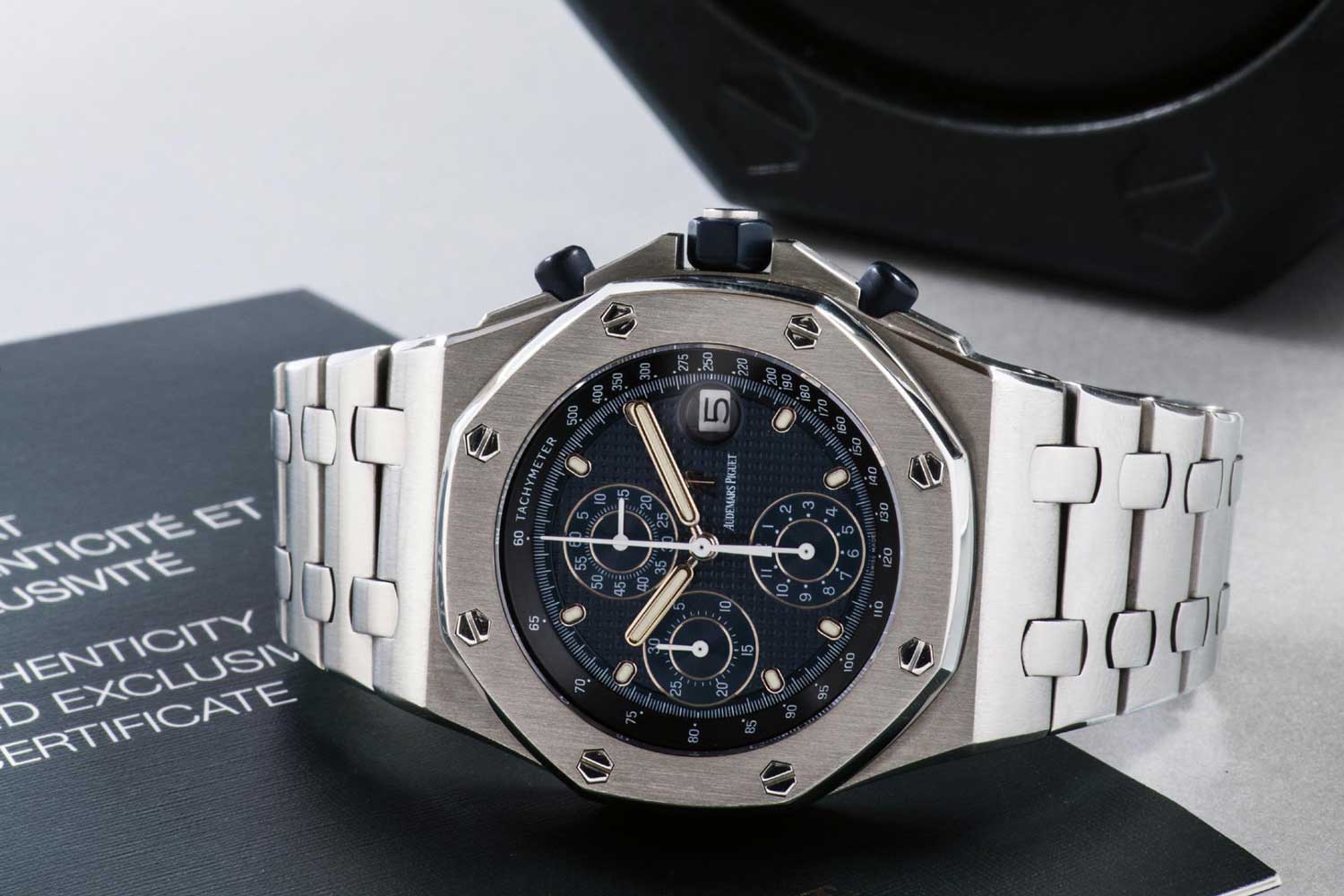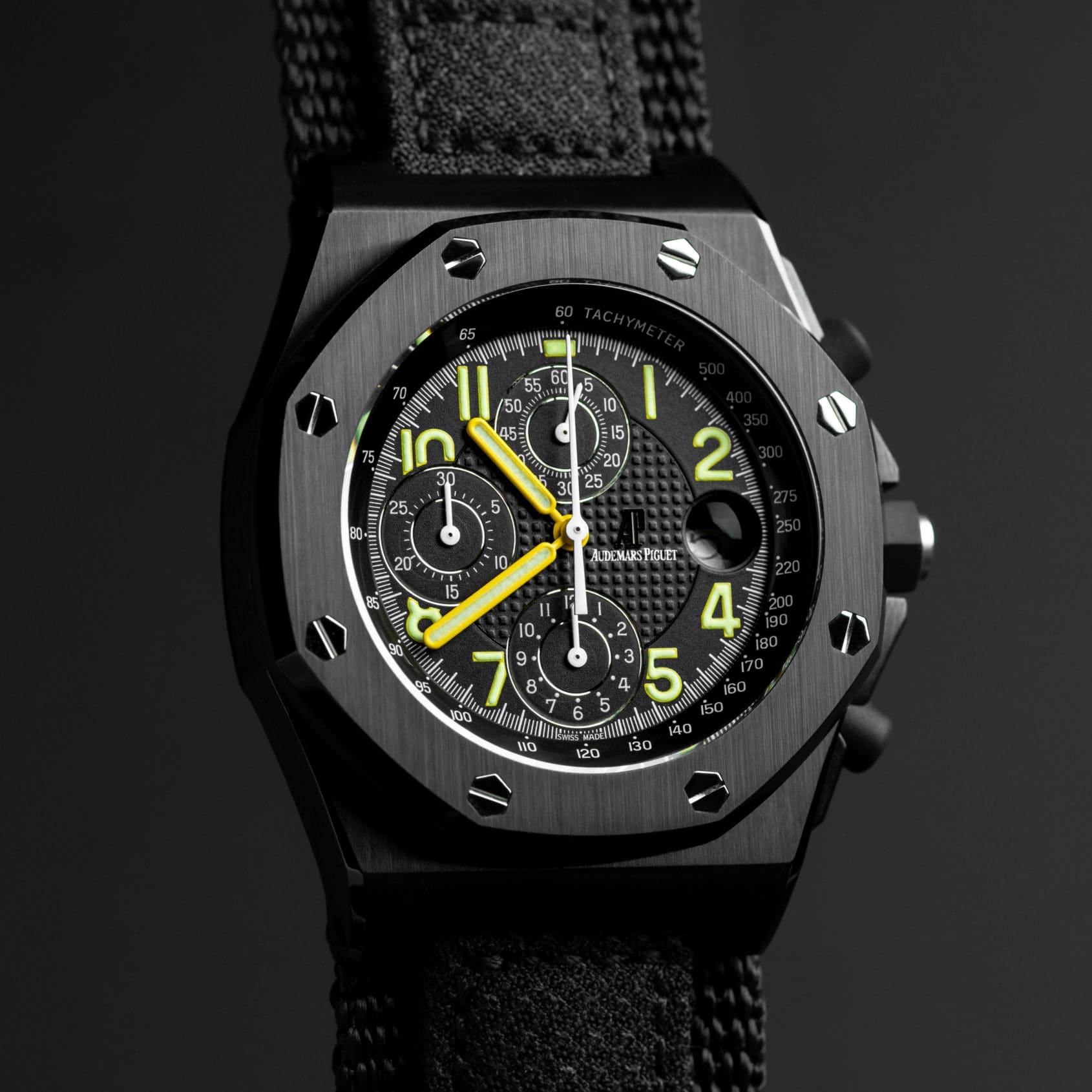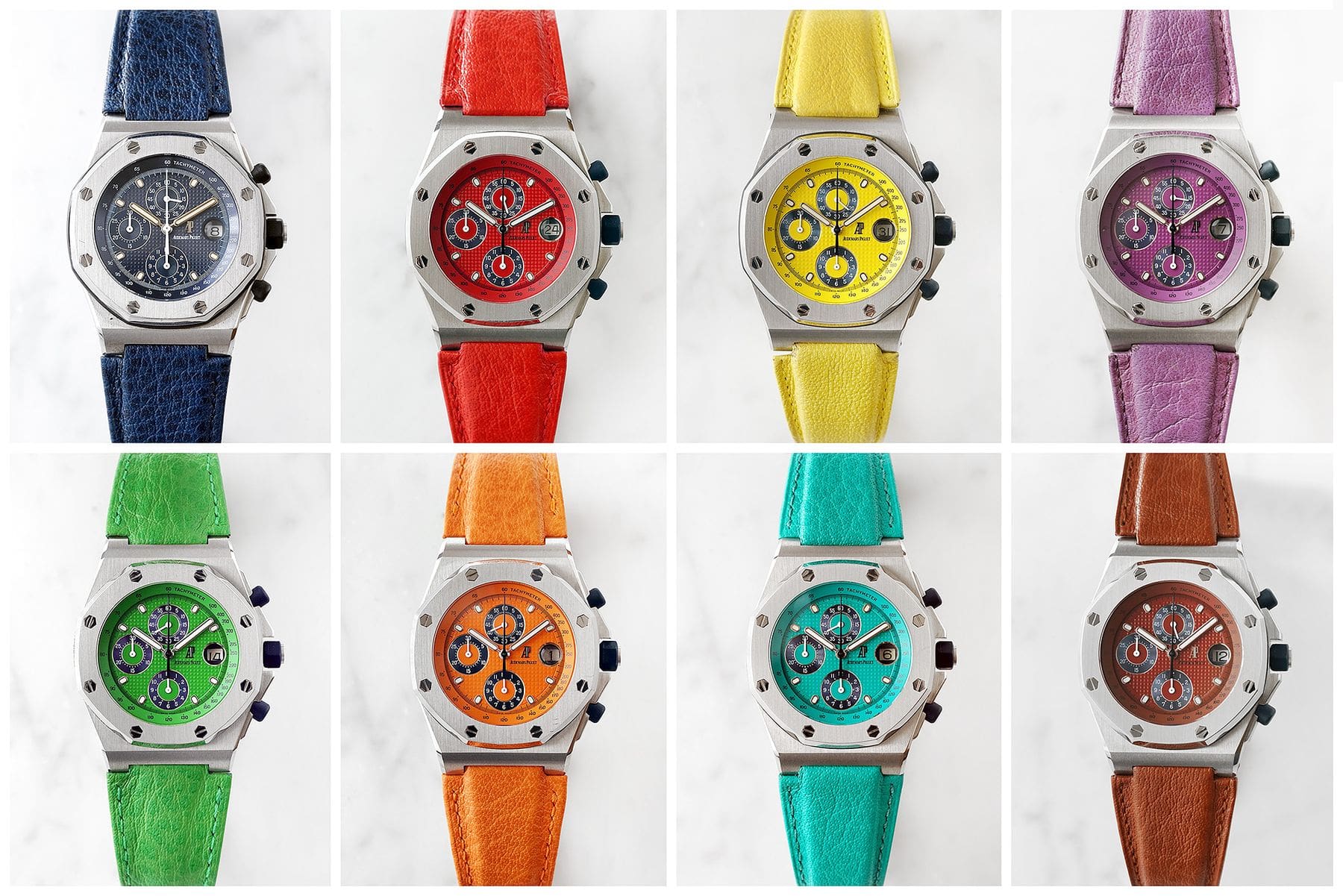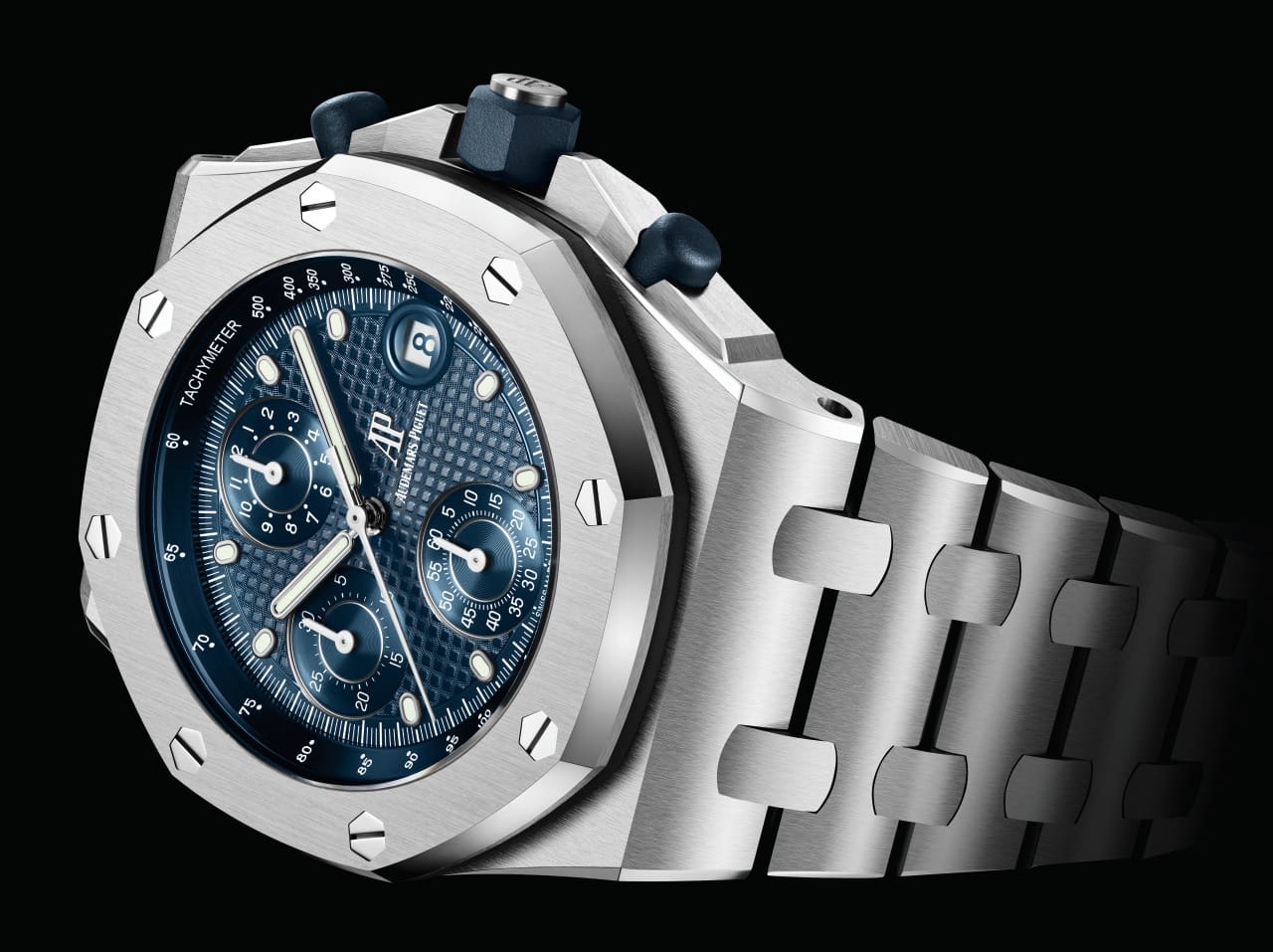Finding beauty in the beast: A brief history of the Audemars Piguet Royal Oak Offshore
Zach BlassAs a twin, I understand the notion of being in the shadow of a sibling. Today, when collectors discuss the Audemars Piguet Royal Oak you typically hear about the birthing of the luxury sports-watch trend and the elevation of steel – not so precious in its medium, but very precious in its construction with top-notch hand finishing and hours dedicated to perfecting each facet and edge of the case and bracelet. Its younger and more brutish sibling, the Offshore, while given the same attention to detail by AP’s watchmakers, is not awarded the same graceful image. In fact, both within and outside the manufacture, the Offshore was nicknamed “the beast”. While its larger size confounded traditionalists, in hindsight the collection represents the mindset the brand has adopted today – working to usher in trends rather than follow them. This is the brief story of how the world began to find beauty in “the beast”.
The beast is born: Audemars Piguet Royal Oak Offshore

In 1989, designer Emmanuel Gueit, who, at the time, worked for Audemars Piguet, presented a conceptual sketch that introduced a more robust take on the classic Genta designed Royal Oak. Its design, later realised for commercial release in 1993, came at a time where bigger and bulkier watches really spoke to a younger generation and their sense of horologically derived masculinity. Nicknamed “The Beast”, AP’s watchmakers initially hedged their bets – remembering the slow-burn of the original watch in 1972. So they created a batch of 100 pieces, engraved with Royal Oak on the caseback as a precautionary measure in case the collection ended there. Fortunately for AP, the Offshore eventually proved to be a success – its aesthetic hitting home with the more active lifestyle buyer and a market craving larger timepieces.
The bastard son: Gerald Genta showed resistance to the evolution

If a particular design is your baby, inevitably you would protect and guard it with your life. As the father of the Royal Oak, legendary designer and watchmaker Gerald Genta was not all to pleased when Emmanuel Gueit adapted its original design with larger and exaggerated proportions – in Genta’s mind it was like turning a Porsche into a Hummer. Genta publicly criticised the Offshore, blasting Audemars Piguet for, in his mind, using the Royal Oak name to push forth a design that had none of the essence or finesse of his original. To be fair to Genta, initially the market agreed with him – modest sales in the watch’s early years justified the caution that Audemars Piguet felt was necessary. But, if anything, its launch proved to be a parallel to the Royal Oak in 1972. The original Royal Oak was not immediately accepted by the market either, with many confused by such an expensive reference in stainless steel. Like the Royal Oak, however, the Offshore eventually hit its stride among young and wealthy Italian collectors, as well as celebrities like Michael Schumacher and Arnold Schwarzenegger. This would ultimately help the collection cultivate the status it holds today, building momentum in the public eye.

The fountain of youth: A traditional holy trinity manufacture births a youthful spirit

The Royal Oak Offshore not only stood out thanks to its larger sizing, it also drew attention thanks to its bolder aesthetics – playing with colour in a way that brands of AP’s horological might never had. In 1996, Audemars Piguet daringly presented eight colourful Offshore watches at the Baselworld fair. Even today, where fun colours are more accepted in the market, most brands would have spread out this rainbow of different shades out over many years. This pioneering spirit is consistent with what we see today from Audemars Piguet: a willingness to leverage their traditional know-how in a manner most manufactures of their age and prestige are simply too afraid to.
Ergonomics are key: today the Royal Oak Offshore has never been more wearable
Nearly three decades later, this innovative spirit continues. With references in stainless steel, titanium, ceramics, carbon and precious metals, a variety of materials have been explored. Subtle yet major refinements have been introduced this past year, with more ergonomic cases that sit better on the wrist, an interchangeable strap system that allows the wearer to quickly switch between bundled strap options, and the usage of modern in-house calibers in favour of sourced and modified ebauches.
One of our favourites, as of late, is the Audemars Piguet Offshore 43 Flyback Chronograph. Its refined case design is far more ergonomic, making its 100 metre water-resistant case, 43mm in diameter and 14.4mm thick, the most wearable Offshore 43 ever made. Its heightened level of robustness offers greater “daily wearer” capabilities, making it the Royal Oak family model to inquire about if you want increased durability on the wrist. That being said, the Offshore 43 Flyback Chronograph receives the same level of luxurious attention to detail with its incredibly executed finishes – both inside and out.
Ultimately, the greatest strength of the Offshore is what some consider its greatest weakness: that it is not your standard Royal Oak. The watch’s sporty robustness affords Audemars Piguet a more versatile canvas to explore further complications and bolder aesthetics. Undoubtedly, the original Royal Oak DNA will always be the more iconic forerunner of the Offshore. But with such a spotlight comes restraint, a purity that must be upheld. As Genta himself expressed, AP understands they can only play around with the Royal Oak so much without push-back from devout purists and collectors. The Offshore allows scope for greater liberation. As the younger sibling – the Prince Harry to the Prince William – the Offshore does not have the same pressure to remain the same. The Offshore is, in many ways, the bridge between the Royal Oak and Royal Oak Concept. If you want to uphold tradition, go ahead and queue up for a Royal Oak. But if you want to tame “the beast”, explore a less predictable path with fresh aesthetics and takes on complications, then your daring spirit might be best suited to the Royal Oak Offshore.





